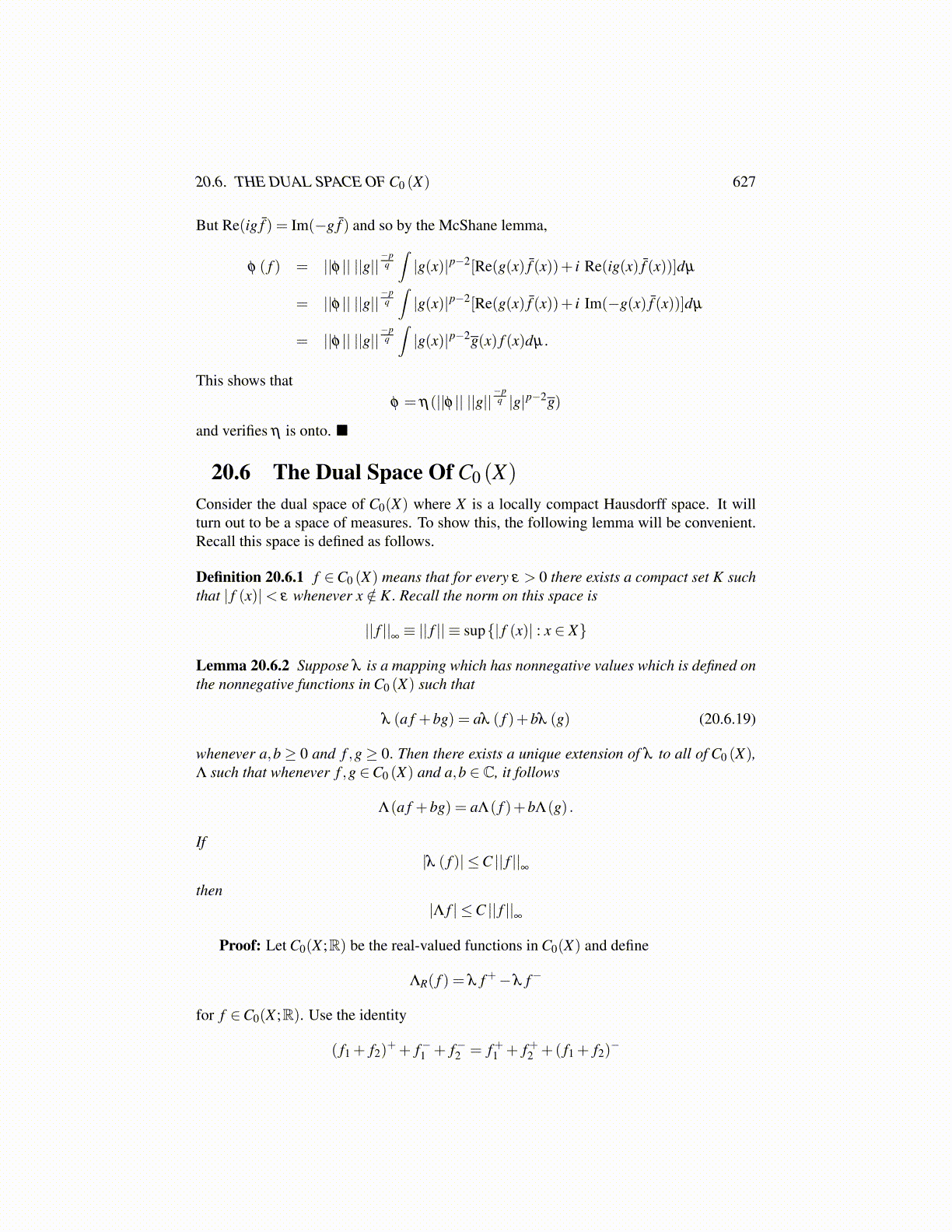
20.6. THE DUAL SPACE OF C0 (X) 627
But Re(ig f̄ ) = Im(−g f̄ ) and so by the McShane lemma,
φ ( f ) = ||φ || ||g||−pq
∫|g(x)|p−2[Re(g(x) f̄ (x))+ i Re(ig(x) f̄ (x))]dµ
= ||φ || ||g||−pq
∫|g(x)|p−2[Re(g(x) f̄ (x))+ i Im(−g(x) f̄ (x))]dµ
= ||φ || ||g||−pq
∫|g(x)|p−2g(x) f (x)dµ .
This shows thatφ = η(||φ || ||g||
−pq |g|p−2g)
and verifies η is onto.
20.6 The Dual Space Of C0 (X)
Consider the dual space of C0(X) where X is a locally compact Hausdorff space. It willturn out to be a space of measures. To show this, the following lemma will be convenient.Recall this space is defined as follows.
Definition 20.6.1 f ∈C0 (X) means that for every ε > 0 there exists a compact set K suchthat | f (x)|< ε whenever x /∈ K. Recall the norm on this space is
|| f ||∞≡ || f || ≡ sup{| f (x)| : x ∈ X}
Lemma 20.6.2 Suppose λ is a mapping which has nonnegative values which is defined onthe nonnegative functions in C0 (X) such that
λ (a f +bg) = aλ ( f )+bλ (g) (20.6.19)
whenever a,b ≥ 0 and f ,g ≥ 0. Then there exists a unique extension of λ to all of C0 (X),Λ such that whenever f ,g ∈C0 (X) and a,b ∈ C, it follows
Λ(a f +bg) = aΛ( f )+bΛ(g) .
If|λ ( f )| ≤C || f ||
∞
then|Λ f | ≤C || f ||
∞
Proof: Let C0(X ;R) be the real-valued functions in C0(X) and define
ΛR( f ) = λ f+−λ f−
for f ∈C0(X ;R). Use the identity
( f1 + f2)++ f−1 + f−2 = f+1 + f+2 +( f1 + f2)
−